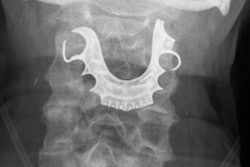
The number of severe dentistry failures that clinicians could have prevented, such as performing surgery on the wrong location, continues to climb. Wrong-tooth removals account for up to 10% of all preventable safety dental incidents, known as "never events," according to a new study.
Incidents such as the removal of the wrong teeth remain common wrong-site surgery never events, accounting for between 15% and 24% of all wrong-site never events, the researcher found.
"Further efforts have focused on prevention, and the implementation of existing measures to reduce the risk of wrong-tooth extraction is warranted," wrote M.N. Pemberton, PhD, of the University of Manchester Division of Dentistry, in the study published on September 10 in the British Journal of Oral and Maxillofacial Surgery.
The numbers continue to rise despite efforts of dental experts to help guide safety protocols. An international consensus was reached in 2018 that resulted in guidelines to address the worst failures that occur in the practice of dentistry.
In the current study, Pemberton examined data from April 2015 to April 2019 and found that prevention efforts haven't made much of an impact and that wrong-site surgeries and tooth extractions have been on an uptick.
| Wrong-site surgery and wrong-tooth extractions 2015 to 2019 | ||||
| 2015-2016 | 2016-2017 | 2017-2018 | 2018-2019 | |
| Total No. of never events | 442 | 445 | 495 | 496 |
| Total No. of wrong-site surgeries | 179 | 189 | 209 | 207 |
| Total number of wrong-tooth extractions | 33 | 46 | 34 | 42 |
Also, the author found that most wrong-teeth extraction reports came from hospitals or community services and not from primary care-based dental settings. This is despite the requirement that all care funded by National Health Service (NHS) England, including patients seen in primary care settings, report never events.
| Source of wrong-extraction reports 2015 to 2019 | ||||
| 2015-2016 | 2016-2017 | 2017-2018 | 2018-2019 | |
| Hospital or community service | 33 | 42 | 28 | 35 |
| Primary care settings | 0 | 4 | 6 | 7 |
Because the patient-safety reporting systems in the U.K. primary care dentistry have been described as complex and obtuse, the author noted the number of wrong-tooth extraction cases, as well as other patient safety issues, likely are underrepresented.
A number of educational strategies, such as marking extraction locations on patients' skin, have been explored to reduce the number of extractions of wrong teeth and other never events, but the study findings indicate that more work needs to be done.
"It is unclear how widely these processes have been taken up in clinical practice, but the data presented indicate that further effort in research should focus on prevention, and the implementation of known patient safety strategies," Pemberton wrote.




















